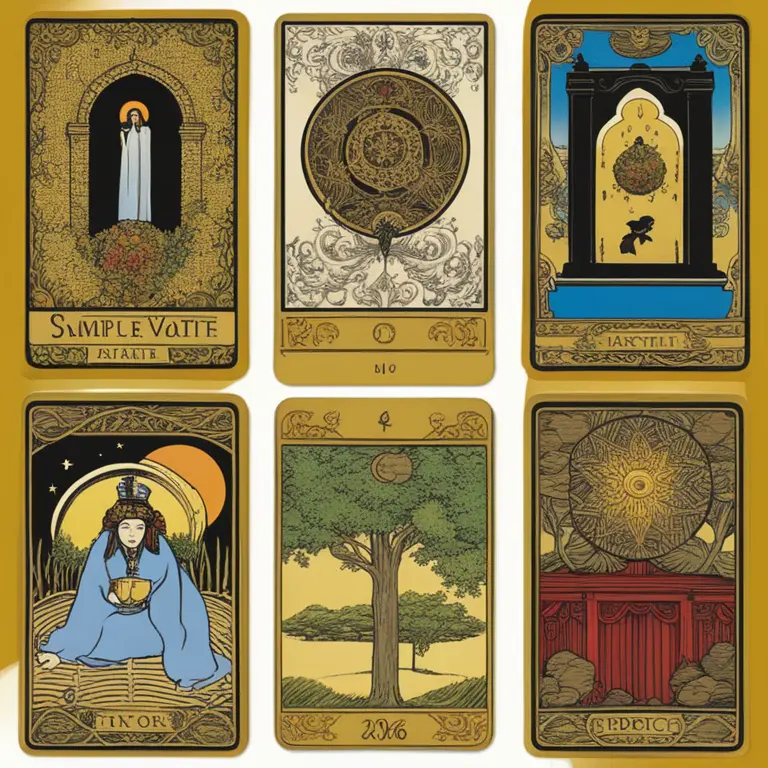
Historical Beginnings of Tarot
Tarot cards have been shrouded in mystery ever since their inception. Their origins date back to the 15th century, where they first emerged in Europe as playing cards for games such as Tarocchini and French Tarot. It was only later that these cards were adopted for divinatory purposes. The earliest tarot decks were hand-painted, a luxury item created for nobility, with artists remaining largely anonymous. Nonetheless, the early cards were clearly the work of skilled medieval craftsmen, combining artistic flair with the symbolism of the day.

Rise of Tarot in Mysticism
With the rise of the occult in the 18th and 19th centuries, tarot cards gained prominence as tools for divination. The French occultist Antoine Court de Gébelin is often credited with popularizing the idea that tarot cards held secret wisdom. Another significant figure is Eliphas Lévi, who associated the tarot with the Kabbalah and astrology, influencing the designs of future decks. The actual designers of these occult decks were typically members of secret societies who encoded their understanding of esoteric principles into the artwork.

The Iconic Rider-Waite-Smith Deck
Perhaps the most influential tarot deck was created in the early 20th century: the Rider-Waite-Smith deck. Credited to two individuals, mystic A.E. Waite and artist Pamela Colman Smith, it was the first deck to feature detailed pictorial images on all 78 cards. Smith's illustrations are often considered a watershed moment in tarot design, departing from the simpler pips of earlier decks and imbuing each card with distinct symbolism pulled from a mix of sources including astrology, the Kabbalah, and medieval and Renaissance art.

The Thoth Tarot and Crowley’s Influence
Another notable entry into the annals of tarot history is the Thoth Tarot, designed by the infamous occultist Aleister Crowley and painted by Lady Frieda Harris. This complex deck was finished in the 1940s and reflects Crowley's intricate system of Thelema philosophy, astrology, and various other occult systems. Although intricate and dense with esoteric symbolism, the Thoth deck remains a pivotal influence in contemporary tarot designs and a testament to the collaborative efforts of designer and artist in tarot card creation.

Modern Tarot and Diverse Voices
In the modern era, the design of tarot cards has seen an explosion of diversity, both in terms of style and the range of voices contributing to their creation. Now, tarot decks are designed by a host of artists and are often self-published or released through small independent publishers. This has allowed for a wide range of artistic interpretations, from the traditional imagery of the Rider-Waite-Smith to more modern, minimalist, and culturally specific designs that still resonate with the astrological forecasts and horoscope readings of 2024 and beyond.
Looking Ahead: The Future of Tarot Design
At a glance, the future of tarot seems to be a continued expansion of creative horizons, with new technology enabling more people than ever to craft their own decks. As astrology and tarot reading practices evolve, the designs of the cards will likely follow suit, reflecting the prevailing cultural dynamics and spiritual inclinations of the time. Regardless of changes, the fundamental purpose of tarot as a mirror to the human experience and a tool for introspection seems destined to remain constant.
Published: 2/8/2024
Modified: 2/9/2024
More predictions
Come back here soon to learn more about yourself and your future


Do Tarot Cards Foresee Future Events?
Explore the captivating world of tarot and its capacity to reveal insights about the future in this comprehensive article.


The Tarot Card Associating with Aquarius
Discover which tarot card embodies the traits of Aquarius, tying in celestial intuition with the wisdom of the tarot.


The Art of Tarot Reading: Insights and Predictions
Delve into the mystical world of tarot reading to uncover the secrets of your psyche and foreshadow your future through this ancient form of divination.